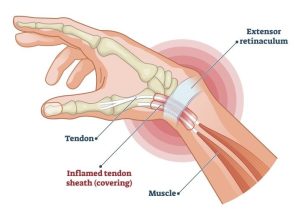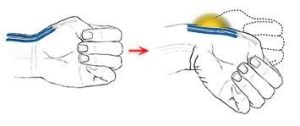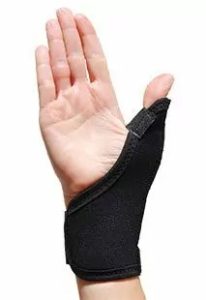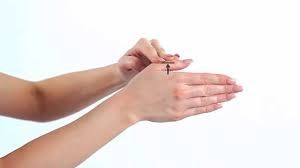Do you get pain on the thumb side of the wrist when using your thumb or lifting objects?
De Quervain’s Tenosynovitis is a painful condition that displays these symptoms and may be the culprit. This is brought about by inflammation of the tendons and tendon sheath that passes over the bony edge of your wrist, at the base of your thumb.
Chronic overuse from repetitive thumb or wrist movements is a common cause of this injury. Therefore, regular activities such as using scissors or scrolling on a phone can elicit pain. Lifting tasks where the palms face each other, such as picking up a baby under their arms, may provoke pain. Furthermore, a hard knock to the thumb side of the wrist can also cause swelling, consequently leading to irritation of the tendons.

Symptoms may include:
- Pain with thumb abduction (moving the thumb away from your hand)
- A flicking or snapping sensation on the thumb side of the wrist during movement
- Swelling or redness in the area and pain that can radiate up the forearm

The Finkelstein’s Test can be used to diagnose De Quervain’s Tenosynovitis:
- Grasp your thumb with the fingers
- Gently bend your wrist away from the thumb side
- Pain in the thumb side of the wrist is an indication that De Quervain’s may be present.
Follow the steps below to start your recovery:

- Begin by avoiding or modifying any activities that elicit pain. If symptoms are very irritable, the use of a brace that supports the thumb can help protect the region and allow the area to rest.
- A combination of ice (to reduce pain) and heat (to improve blood flow) can be a way to manage symptoms. Also, over the counter anti-inflammatory drugs such as ibuprofen can be helpful.
- Massage – with gentle pressure run slow strokes from the base of the thumb across the painful area and up ⅓ of the forearm. Do this only going in the direction towards the elbow. After 20-30 strokes pain relief may be present on movement.
- Exercises- must be progressed slowly and avoid provoking significant pain. Start with gentle isometric contractions. Press the thumb against the index finger with the unaffected hand, try to lift the thumb away until you feel a low amount of pain. Hold this contraction for 10-20 seconds. Do 5 repetitions.

If De Quervain’s Tenosynovitis is left for too long, degenerative changes can occur in the tendons. Consequently, this will make symptoms worse and recovery much slower. It is best to book in for a session with your physiotherapist as early as possible. There are plenty of treatments for different stages of recovery that a physiotherapist can guide you through. It is also important to rule out other conditions that may present similar symptoms.
For further individualised Physiotherapy advice on how you can effectively manage your wrist pain AND GET BETTER RESULTS, you can book an appointment with me. Call us on (02) 9267 3775 or BOOK ONLINE now!
Nick Breit, Physiotherapist @PhysiCo City

